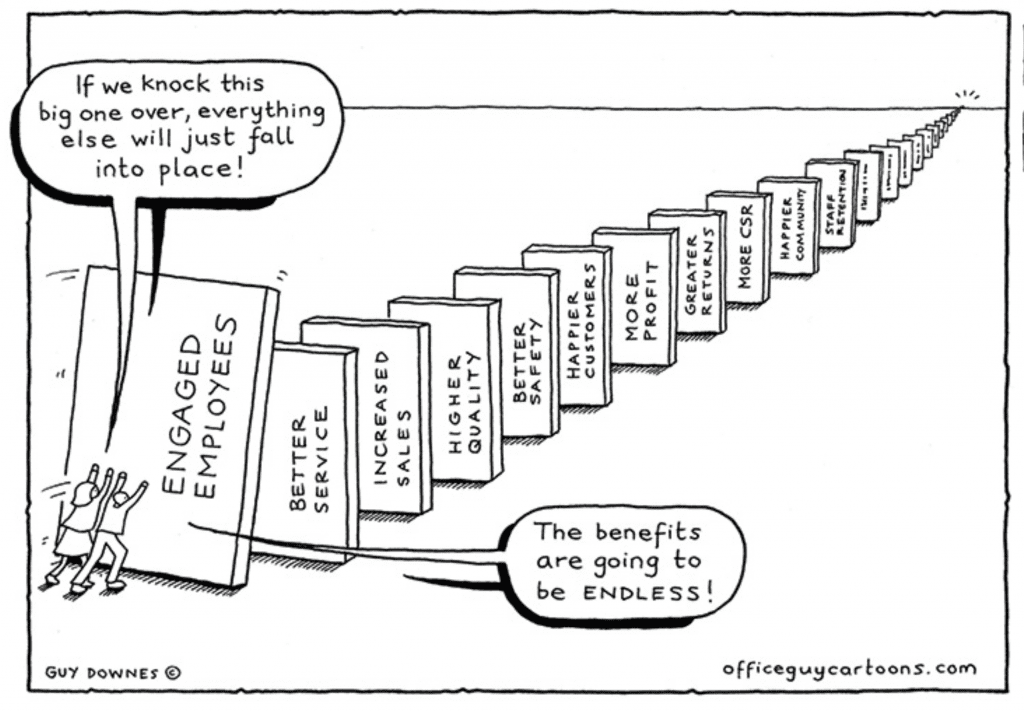
The idea of culture change is easy; the details of execution are complex. Most of us can only speculate how the organization is actually going to respond to change and why. Enterprise level “cascading” plans are unlikely to succeed. When leaders use the word “cascade” in the context of culture change, they are referencing an old corporate communications/change-management paradigm that is useful for communications but NOT useful for the real work of culture change or adult development. Few leaders truly understand how culture works — a new approach is needed to support leaders responsible for shaping culture.
No you can’t “cascade” culture change… but you can scale courageous culture attributes.
The CXOs ideal, courageous culture vision may or may not be possible yet — especially in certain pockets of the organization — and for good reason. Only in the midst of executing an expert culture change prototype can we begin to learn more about what’s possible re: the three, big “HOW-TO?” questions:
1- How to define the way teams should connect to superiors/subordinates to be most effective? Why ? Under what circumstances/situational context?
2- How to break down the silos and unite cross-functional teams? Why? Under what circumstances/what situational context?
3- How to build versions of progress (prototypes) that demonstrate value to the organization. How to define and measure which new prototype elements work/don’t work? Why? Under what circumstances/situational context?
Then we can more strategically explore how to translate that incremental learning into value more broadly and how we might scale these desired, constructive culture attributes.
But before solving the complex execution details mentioned above… we need to focus on understanding/clarity and get alignment around what’s really going on in our culture.
- What aggressive/defensive norms are working against us? Where are the anomalies working for us? against us? Under what circumstances/situational context?
- What passive/defensive norms are working against us? Where are the anomalies working for us? against us? Under what circumstances/situational context?
- What causal factors provide the greatest leverage for change? Why? Under what circumstances/situational context?
If you don’t first get the clarity & alignment…. you’re screwed. You’re not gonna scale or cascade anything besides culture incompetence.
Are you ready for the clarity & alignment?
I think you’re ready. CXO, you got this.

